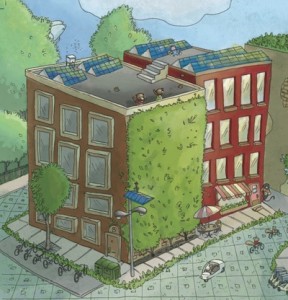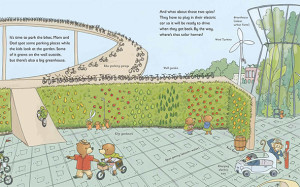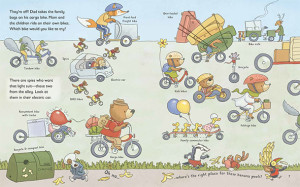In a Glasgow project to get preschool children the opportunity to learn to ride a bike, advocates aimed to increase children’s physical activity in the city. Over the course of its first 2 years, Play on Pedals http://playonpedals.scot engaged more than 7000 preschool children using balance and pedal bikes. They worked by offering training to early years teachers and volunteers, who learned about cycling as well as bike maintenance. The project also ran a bike donation and redistribution program. The program is set to expand through Transport Scotland. Follow them on twitter: @playonpedals

Play on pedals at the Bike Station, Glasgow January 2017,
Photo Andy Catlin
In our book Bicycles, Airships, and Things that Go, we try to illustrate a lot of positive family cycling, with spreads featuring:
- many different kinds of bikes
- bike parking
- bike bus
Great ways to expose the kids to bikes on the pavement and on the page.



Bicycles, Airships and Things that Go, written by Bernie McAllister, illustrated by John Aardema
[Order the book on Amazon http://a.co/60EG7LD]




